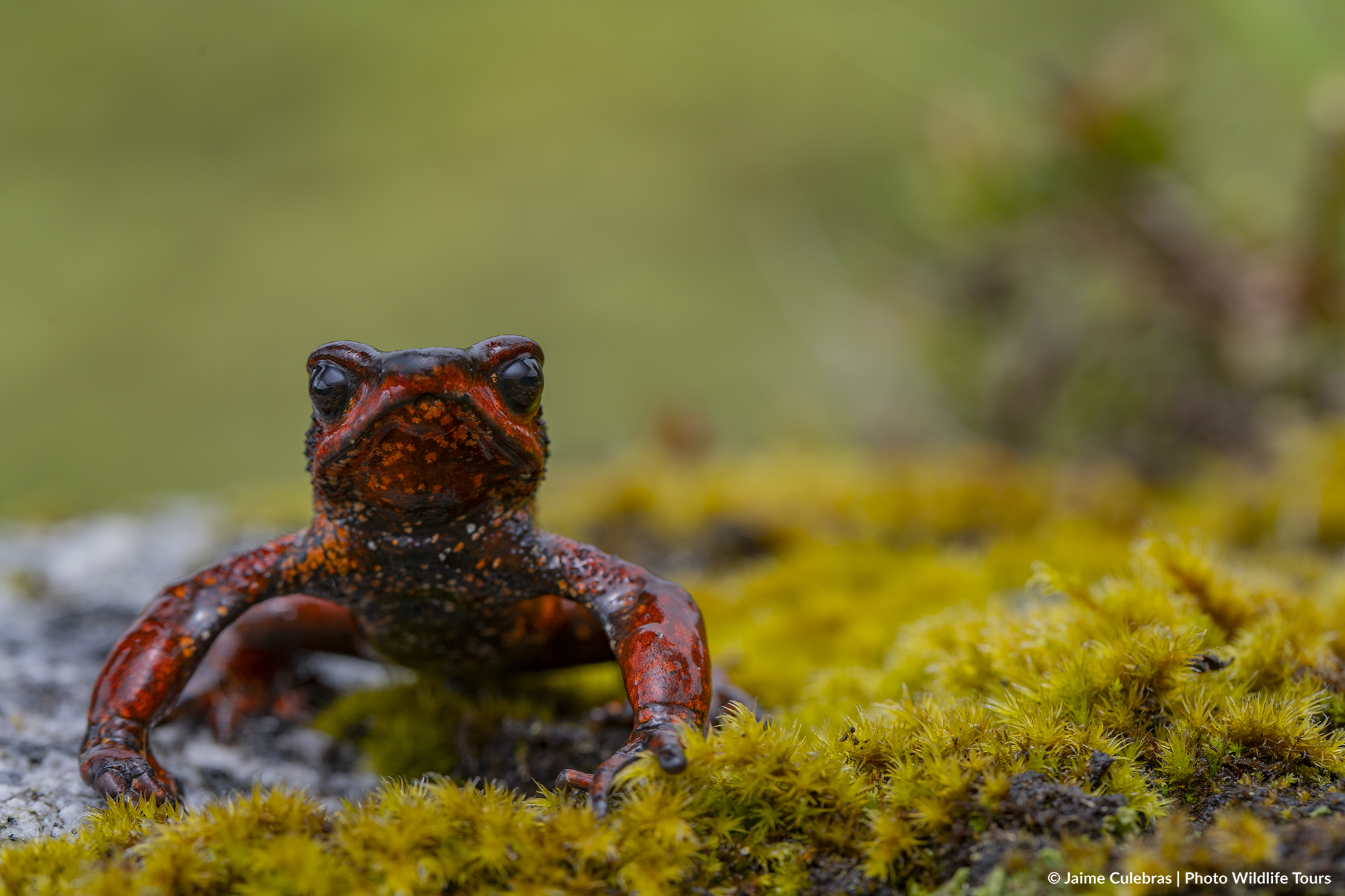Efforts to safeguard the jewels of the Neotropics work, but urgently need to be scaled, according to a new study
Forty years after an infectious disease called chytridiomycosis began its deadly wave across Latin America and decimated amphibian populations in its path, the hardest-hit amphibians–harlequin toads–are still facing an ongoing crisis that requires a renewed investment in their conservation, according to a new study published in scientific journal Communications Earth and Environment this month.
“We know that the hard work of amphibian conservationists in Latin America have made a genuine difference in bringing some of these species back from the brink,” said Lina Valencia, ASI founder, co-coordinator of the IUCN SSC Amphibian Specialist Group Atelopus Task Force, and Re:wild Andean countries coordinator. “But many of these species that are coming back are not fully recovering and face additional threats, including the effects of climate change. This paper makes it clear that we need more resources, policies, and help from local communities to make sure we don’t lose this beautiful and charismatic group of amphibians.”
Harlequin toads range across Central and South America–from Costa Rica in the north, to Bolivia in the south, and in nine countries in between. They come in a variety of colors: orange, red, green, yellow, brown, black and sometimes even purple, earning them the nickname “clown frogs.” In some countries, harlequin toads have been imbued with tremendous cultural value.
In the Communications Earth and Environment paper, the 100 co-authors, primarily including conservationists and researchers from countries where harlequin toads naturally occur, compared population data from 2004 to population data from 2022 to examine species-specific trends over the last two decades. The paper finds that harlequin toads remain threatened and have not moved any further from extinction, although conservation efforts have helped keep many populations steady.
Thirty harlequin toad species that were feared extinct are actually coming back in small numbers. Since chytridiomycosis started its deadly wave, researchers in Ecuador rediscovered the Mindo harlequin toad, a species lost to science for more than 30 years, while another team in Bolivia rediscovered the tricolor harlequin toad, lost since 2003. Another team in Panama found that some of the frog species most susceptible to chytrid have developed better defenses to fight the disease and as a result have started to rebound even after biologists feared they may be extinct.
The chytrid fungus and habitat destruction are still the greatest threats to harlequin toads, with the effects of climate change now emerging as an additional challenge. As the result of chytridiomycosis, which ultimately results in a heart attack in the amphibians it infects, in addition to habitat destruction, 84 percent of the 94 harlequin toad species that have been assessed by the IUCN Red List of Threatened Species are threatened with extinction.
“Harlequin toads are the poster child for the amphibian crisis and their decline first tipped off herpetologists, conservationists and researchers around the world that something catastrophic was happening across the Neotropics,” said Stefan Lötters, lead author of the paper and associate professor in the biogeography department of Trier University in Germany.
Today researchers know much more about chytridiomycosis than they did in the 1980s and are working hard to understand more about the pathogen, and how some individual frogs and entire species have survived it unscathed or are now recovering from it. They are researching probiotics and the genetics of both the pathogen and the frogs to develop options for helping harlequin toads to survive with chytridiomycosis. And early actions to bring harlequin toads into conservation breeding programs have ensured that those species that are extinct in the wild, such the Panamanian golden toad, have not vanished forever.
In addition, the Atelopus Survival Initiative (ASI), which launched in 2021, is working to implement the first-ever action plan for harlequin toads by bringing together 60 organizations in 15 countries to protect and restore harlequin toads. Members of the ASI have decades of experience and knowledge necessary to prevent the extinction of the entire genus of harlequin toads across the region where these species still survive. The ASI and its members, including governments, local communities and Indigenous peoples, address threats to these species–and new ones as they arise–taking into account the social, political and cultural realities of each of the 11 countries where harlequin toads are found.
“The ASI’s collaborative approach has the transformative potential in a group of species that has been in desperate need of help for so long,” said Andrea Terán-Valdez, collections manager for the Jambatu Amphibian Research and Conservation Center in Ecuador, co-author on the paper, and a member of the ASI. “Instead of working in isolation, we are pooling our expertise to exchange methods, share experiences and leverage resources to progress in the protection of these species. We remain hopeful that with these continued efforts and the necessary resources, we can help some of these jewels of Latin America–and the ecosystems in which they live–not only a chance to recover, but an opportunity to thrive.”
Photo: Guajira Harlequin Toad (Atelopus carrikeri) in Colombia © Jaime Culebras/Photo Wildlife Tours

